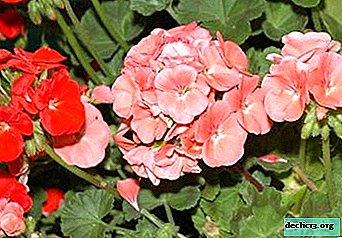Saxon Switzerland park - what to see and how to get
Saxon Switzerland is a German national park located in the eastern part of the country. Known for its unique sandstone cliffs and numerous medieval fortresses.

General information
This is one of the most famous and popular national parks in Germany. Located in the eastern part of the country, on the border with the Czech Republic. It covers an area of 93 square meters. km This area became famous thanks to the Elbe Sandstone Mountains, which have an unusual and unique shape.
The name of the reserve appeared in the 18th century - the young artists Zingg and Graff, who were from Switzerland, once noticed that this part of Germany is strikingly similar to their homeland. The well-known publicist of the time Götzinger popularized the new name.
Interestingly, earlier the name of the national park “Saxon Switzerland” was much less picturesque. This area was called the Meissen Plateau.
Sights

Almost all the attractions that tourists come to see are created by nature. In addition to the famous Bastei rocks and the Königstein fortress, in Saxon Switzerland you will surely find many other interesting places.
Bridge and Rocks BasteiThe main symbol and the most recognizable place in the “Switzerland” park are the bridge and the Bastei rocks. This is a series of sandy mountains (their height reaches 288 m), along which there is a massive stone bridge, which is more than 200 years old. Here is one of the best viewing platforms of the reserve. For more information about this part of the national park and how to get to it from Dresden, see this article.
Königstein Fortress
Königstein is an old 13th-century fortress built among mountains and steep cliffs. This attraction of “Saxon Switzerland” is located in the northwestern part of the reserve. Like other similar buildings, she was called upon to defend her country from enemies and hide in her bowels the ill-wishers of the royal family.
So, at the beginning of the 18th century, the alchemist Bötter was imprisoned in Königstein. Subsequently, it was this man who developed the porcelain formula, thanks to which the famous Meisen manufactory soon began to work in Germany.
During World War II, paintings were hidden in the castle from the famous gallery in Dresden, and in 1955 a museum was opened in Königstein, which annually visits more than 1.5 million tourists a year.

Having visited the military-historical exposition, you can learn about:
- the construction of the Königstein fortress in “Saxon Switzerland”;
- famous prisoners held in the dungeon;
- the fate of the royal family, which was hiding in the castle during the uprising of 1849;
- the role of Königstein in the First and Second World Wars.
Interestingly, in the fortress is the deepest well in Saxony and the second deepest in Europe (152 m).
In addition to the museum, in the fortress are:
- German restaurant
- souvenir shop (the largest in the reserve).

Lichtenhain Falls is one of the most picturesque and beautiful places in the national park. Perhaps this is the first attraction in the park, which tourists began to visit. At the beginning of the 19th century, a local resident opened a restaurant near the waterfall, and after he set up chairs for relaxing (it was a pleasure from 2 to 5 gold marks).
Today, the waterfall is the center of the national park, because here several hiking trails begin at once. For example, here they start:
- trail to the gate Kustal;
- artists' road (this is the most beautiful place where famous European painters loved to walk and create);
- study trail (here you can find signs describing various animals and plants).

Kustal is a rock gate with a height of 337 m. They got their name due to the fact that in ancient times, local residents (and according to another version the robbers) kept livestock here during the wars.
And in the 19th century, and now Kushtal is very popular with tourists. People come here to:
- Take a look at the heavenly staircase. This is a very long and narrow (two will not pass) stairs that lead to the top of the cliff where the observation deck is located.
- Dine at the best restaurant in Switzerland, opened in 1824. Of course, from that time it was rebuilt more than once and increased in size, but the dishes remained just as tasty and satisfying.
- View the panorama of the national park from a height of 330 meters. Many tourists say that this is the best observation deck in the national park.
Stolpen is the strategically most important and powerful fortress of the Saxon Switzerland reserve. Previously, it was located on the border of Meissen County with Slavic territories, which made it a significant military and trading point on the map.
Interestingly, the deepest basalt well in the world was dug in the Stolpen fortress. Its construction cost the fortress owner 140 guilders (the well in Königstein came out 4 times cheaper).

Even more surprising is the fact that the first water from the well was produced only 30 years after its construction. As a result, they used the well very rarely, and in the middle of the 19th century they completely fell asleep. However, at the beginning of the 20th century, he again could fulfill his main function.
Stolpen is considered the best-preserved fortress on the territory of “Saxon Switzerland” in Germany. Here you can:
- see the tower of Countess Kozel (the most famous resident of the fortress);
- visit the torture chamber (terrible tools are on display here today);
- look into a deep well;
- listen to interesting guide stories about massive fortress walls;
- climb to the observation deck Seigerturm, where you can take beautiful photos of “Saxon Switzerland”.
There is a small cafe in the courtyard of the fortress, which serves dishes according to old German recipes.
Ratensky Rock Theater
The Ratensky Rock Theater, located in a lowland and surrounded by cliffs on all sides, is the only place in the national park where mass events are periodically held - concerts, performances and colorful music shows. The rocky landscape becomes an unusual and colorful decoration.
This is one of the newest attractions of the park, created in 1936 by residents of the Rathen resort. It is interesting that in the 1930s and today the theater staged productions based on the German writer Karl May, who created a series of stories about the adventures of an Indian.
In total, more than 250 theatrical performances take place during the year (mainly the summer months). Anyone can visit them, having previously familiarized themselves with the schedule and plan of the event on the official website: www.nationalpark-saechsische-schweiz.de
How to get from Prague
 Resort Bad Shangau
Resort Bad ShangauGetting from Prague to the “Saxon Switzerland”, which will be divided 112 km, can be done quite quickly (in less than 2 hours), because there is no border between Germany and the Czech Republic. You can do this at:
The trainYou need to catch the Ec. at the central railway station of Prague. Get off at Bad Schandau Station (Bad Schandau). Then you can take a taxi and drive about 13 km. However, the most budget option is to travel by train or bus to Rathen (resort). Before the trip, be sure to check the timetable, as on some days there are no trains running from Bad Schangau to Rathen.
The final stage of the trip is the ferry. You need to go from the Rathen stop to the ferry (less than 300 meters) and catch the ferry, which in less than 5 minutes will transport you to the opposite bank of the Elbe. Now you can go up and admire the views that open from the rocks to the surrounding cities and villages.
Total travel time is 2-2.5 hours. Ticket price:
- by train Prague-Bad Shangau - 25-40 euros;
- for the train Bad Shangau-Rathen - 2.5 euros (or a bus for the same price);
- ferry across the Elbe - 3.6 euros (round-trip price).
Please note that trains run rarely enough, so check the timetable before leaving. You can buy train tickets at the box office of Prague Central Station and at Bad Sangau Station.
 Resort Rathen
Resort RathenThus, getting from Prague to “Saxon Switzerland” on your own is easy. Unfortunately, you can’t get to Saxon Switzerland without transfers, but you can get there quite quickly.
Prices on the page are for July 2019.
Compare accommodation prices using this form
Useful Tips
- Stock up on water and take food with you - the prices in the restaurants of the national park are quite high, and there is no guarantee that you will want to go exactly to that part of the reserve where they are located.
- Properly calculate your strength, because almost the entire territory of the national park consists of mountains and hills.
- Wear comfortable sportswear. Forget about jeans and movement-constraining things.
- Pay special attention to shoes - since you have to go up a lot, do not wear sandals or slippers in which small stones can fall.
- Take an insect bite remedy with you.
- There are a lot of people who want to leave the national park by public transport, so buy tickets in advance.

Saxon Switzerland is a good place for those who love natural attractions.
The history of the creation of the national park "Saxon Switzerland":

















